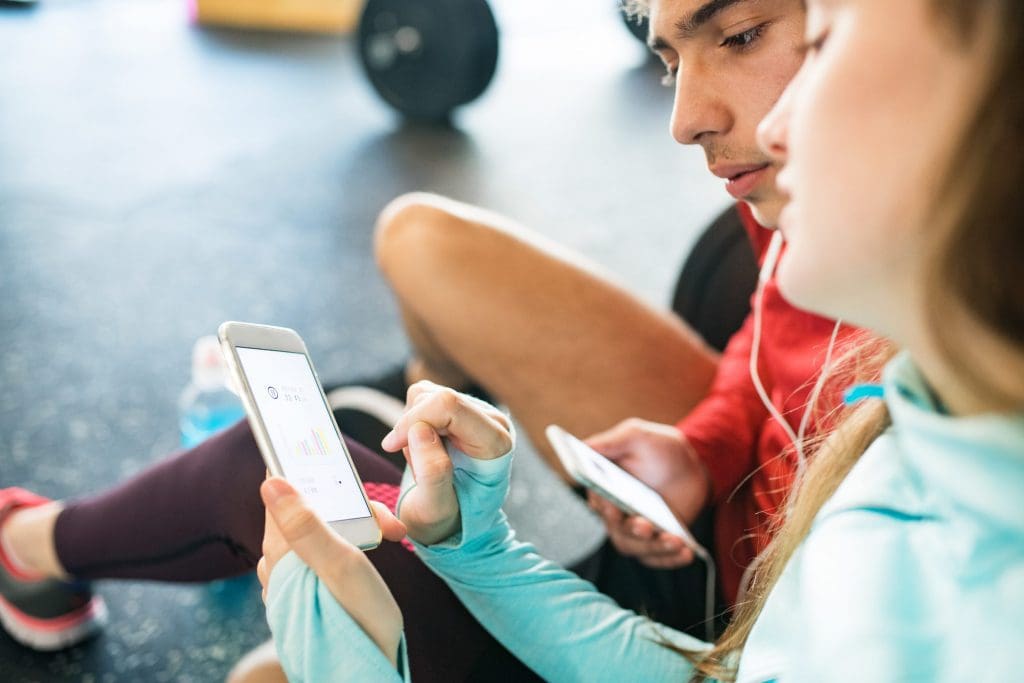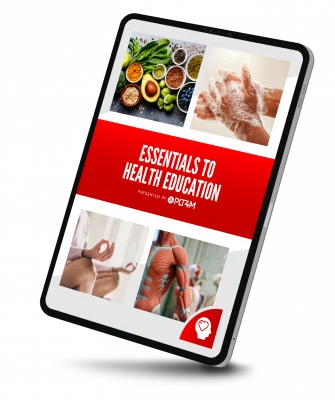In today’s digital age, nearly every aspect of students lives are intertwined with technology and the internet. From social media to school work, almost our entire world has gone digital. Digital citizenship lesson plans explore the different elements of digital citizenship and how students can be safe, appropriate, ethical, empathetic, and more when it comes to living in the world of technology!
What is Digital Citizenship?
Digital citizenship refers to the responsible and ethical use of technology, particularly the internet and digital devices, by individuals. It encompasses a range of behaviors, attitudes, and skills that enable individuals to effectively and safely navigate the online world. Digital citizenship involves understanding how to use digital tools and platforms responsibly, respectfully, and with integrity.
Digital citizenship has become a popular term because it helps us understand that our lives on the internet have impacts and consequences. Teachers and schools incorporate digital citizenship lesson plans to help students learn about the key aspects of living in a digital world.

Key aspects of digital citizenship include:
Digital citizenship lesson plans incorporate the following digital citizenship skills for students to learn about, reflect on, and put into action:
1. Digital Literacy: This involves the ability to find, evaluate, and utilize information effectively online. Digital literacy also includes understanding how to use digital tools and platforms for communication, collaboration, and learning.
2. Online Safety and Security: Digital citizens understand how to protect themselves and others from online threats such as cyberbullying, identity theft, and scams. They know how to create strong passwords, identify phishing attempts, and use privacy settings effectively.
3. Respect for Others: Digital citizenship involves treating others with respect and kindness online. This includes being mindful of how your actions and words can impact others in digital spaces, such as social media platforms and online forums.
4. Critical Thinking and Media Literacy: Digital citizens are able to critically evaluate information and media they encounter online. They can differentiate between reliable sources and misinformation, and they understand the importance of verifying information before sharing it.
5. Responsibility and Ethics: Digital citizenship includes understanding the ethical implications of online behavior. Being a responsible digital citizen includes respecting intellectual property rights, citing sources appropriately, and understanding the consequences of online actions.
6. Digital Footprint and Reputation: Digital citizens are aware of the long-term impact of their online activities on their digital footprint and reputation. They understand that information shared online can be permanent and have consequences in both personal and professional contexts.
Get Our FREE Health E-Book!
The Essentials to Health Education
Get five free health lessons, pulled directly from our Health Curriculum. With lessons on Nutrition, Digital Citizenship, Personal Hygiene and more, there are tons of valuable insights!
Importance of Digital Citizenship Lesson Plans
A study published in JAMA Pediatrics found that adolescents in the United States spend an average of 7 hours and 22 minutes per day on recreational screen media, excluding time spent on homework or school-related activities.
But just because students spend most of their time in a digital world, doesn’t mean they have built all the skills to navigate technology safely, effectively, and appropriately. (And we all probably know many adults that could benefit from digital citizenship lessons!)
Through digital citizenship lesson plans, students can explore different topics that can enhance and improve their digital lives. By doing so, we can help students to be good digital citizens whether they are in school acting as digital learners or merely scrolling through social media at home.
While the topics in digital citizenship lesson plans might seem like common sense for some, students can all benefit from learning (or reviewing) what it means to be a good digital citizen.
PLT4M Digital Citizenship Lesson Plans
At PLT4M, we have put together an 8 digital citizenship lesson plans. PLT4M’s digital citizenship curriculum includes lessons on:
What is Digital Citizenship?
Digital Footprint
Cyberbullying
Digital Dependence
Digital Privacy and Security
Digital Literacy
Digital Communication
Digital Citizenship in Action
Each lesson contains a 1-2 minute video that is paired with a 500-1500 word count written lesson. Students should expect to dedicate roughly 20-30 minutes per lesson.
Sample Digital Citizenship Lesson – Digital Footprint
From social media profiles to online shopping habits, every click, like, and comment leaves a digital footprint. But what exactly is a digital footprint, and why does it matter? As part of our digital citizenship lesson plans, let’s explore this important concept and how you can navigate it responsibly.
Understanding the Digital Footprint
Your digital footprint is the trail of data you leave behind as you interact with websites, social media platforms, and other online services. This footprint includes information such as your social media posts, comments, photos, videos, online purchases, search history, and more.
The devices you use, like smartphones and computers, leave behind traces of your online activity.
Why Does It Matter?
Your digital footprint can have long-lasting implications, both positive and negative. Here’s why it’s essential to be mindful of it:
1. Future Opportunities: Colleges, universities, and employers (and even future potential significant others) often research individuals online. A positive digital footprint can showcase your accomplishments, interests, and character, potentially opening doors to opportunities. Conversely, a negative digital footprint, filled with inappropriate content or questionable behavior, can harm your prospects.
2. Privacy and Security: Information shared online can be difficult to erase completely. Even if you delete a post or photo, it may still exist on servers or in the caches of others who have seen it. Someone might even take a screenshot without you knowing. Being aware of your digital footprint helps protect your privacy and reduce the risk of identity theft or online harassment.
3. Personal Branding: Your online presence is a reflection of who you are. By curating your digital footprint thoughtfully, you can shape your personal brand and how others perceive you. This can be especially important as you transition from high school to college and beyond.
Managing Your Digital Footprint
Now that you understand the importance of your digital footprint, here are some tips for managing it effectively:
1. Think Before You Post: Before sharing anything online, consider its potential impact. Ask yourself if the content aligns with your values and how you would feel if others, including future colleges or employers, saw it.
2. Use Privacy Settings: Most social media platforms offer privacy settings that allow you to control who can see your posts and personal information. Take advantage of these settings to limit your digital footprint to trusted friends and followers.
3. Regularly Review Your Accounts: Periodically review your social media accounts, as well as any other online profiles or accounts you may have. Delete or update any content that no longer represents you positively.
4. Protect Your Passwords: Use strong, unique passwords for each of your online accounts, and enable two-factor authentication whenever possible. This helps prevent unauthorized access to your accounts and protects your digital footprint from being compromised.
5. Be Wary of Oversharing: While it’s natural to want to share aspects of your life online, be cautious about oversharing personal information. Avoid posting sensitive details such as your address, phone number, or financial information.
6. Talk To Others: Help your friends and peers understand the importance of managing yours and their digital footprints responsibly. While you might want a picture with your friends or family as a personal memory, they might want to post it. It is okay to communicate and set clear expectations about what you are comfortable sharing about yourself online.
It Would Never Happen To Me! Digital Footprint Gone Wrong
A lot of this information about digital footprints might not be new information to you. We all have probably heard an adult warn us about something like, “Whatever you post online can live there forever.” And while the ominous warning might sound like exaggeration, it is important to consider the consequences of our digital footprint.
Imagine this scenario:
Sarah and her friend Emily are chatting on Snapchat, sharing funny selfies and updates about their day. Sarah decides to send Emily a private Snapchat message containing a silly photo of herself making a goofy face. Unbeknownst to Sarah, Emily decides to screenshot the photo before it disappears, violating the trust of their private conversation.
Later that day, Emily shows the screenshot to a group of friends during lunch at school, thinking it’s harmless fun. However, one of the friends in the group takes a photo of the screenshot with their phone and shares it with others via text message. Before long, the silly photo of Sarah making a funny face has spread far beyond the confines of her private conversation with Emily.
To make matters worse, one of the recipients decides to post the photo on social media, where it quickly gains traction and begins circulating among classmates and even reaches students from other schools. Sarah, who thought she was sending a private message to a trusted friend, is now mortified as her silly photo becomes the subject of ridicule and gossip among her peers.
In this example, Sarah’s private Snapchat message was exposed due to the actions of her friend Emily, who violated the trust of their private conversation by taking a screenshot. From there, the photo was shared further without Sarah’s consent, ultimately leading to its widespread distribution and the loss of Sarah’s privacy.
This scenario underscores the importance of being cautious about what you share online, even in seemingly private conversations, as well as respecting the privacy of others.
Key Takeaways on Digital Citizenship Lesson Plans
From protecting personal information to texting and talking with friends, we are all digital citizens. Digital citizenship lesson plans can support students as they become young adults in the digital age.
As schools search for ways to teach practical life skills, digital citizenship lessons are some of the best new lessons to add to the curriculum. These lessons can be a perfect fit for advisory, part of the health curriculum, or in many other classes. Wherever teachers and schools choose to add digital citizenship lessons, tap into some of the most trusted resources when starting the conversation!
Get Our FREE Health E-Book!
The Essentials to Health Education
Get five free health lessons, pulled directly from our Health Curriculum. With lessons on Nutrition, Digital Citizenship, Personal Hygiene and more, there are tons of valuable insights!
FAQ
What other health education topics does PLT4M have?
Check out more health education lesson plans from PLT4M here! Different topics include:






